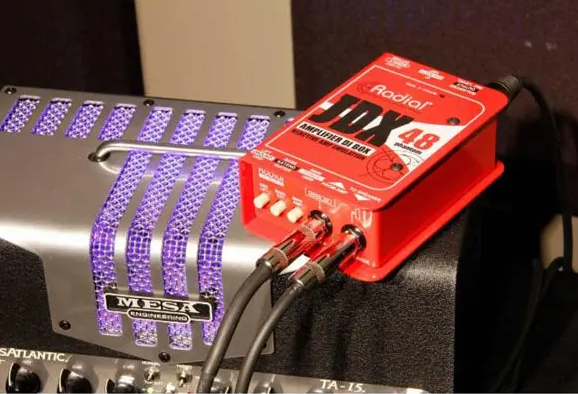
Hey Jonah:
Can you settle something for me? I often use the two 1/4-inch jacks on a DI to easily sum both sides of a stereo input into mono for a single board channel. My boss insists this is bad practice. Who’s right? – Anonymous
Bad news, amigo. The two 1/4-inch jacks on a DI are generally wired in parallel – literally, they’re wired together – so plugging two different outputs into the two jacks is electronically equivalent to plugging those two devices straight into each other. Each low-impedance output sees the other output as more or less a short to ground, and the two outputs try to drive each other. (Think about what would happen if you wired two power amplifiers into the same set of loudspeaker terminals. The concept is the same.)
This may work just fine, and it often does, which might be why you’ve never noticed an issue, but it can also cause Bad Things: overloading the output op-amps can cause nasty distortion or in some cases cause the device to simply shut off.
These outcomes are less common with modern, competently designed devices, but I have still seen them occur and see no reason to take a gamble. If you need to combine inputs, use a passive summing box, which is a great thing to carry in your toolkit – or a DI box that includes a “MERGE” function, designed specifically to deal with these use cases.
The rule for Y cables is easy: splitting an output to multiple inputs is fine, but trying to combine multiple outputs into a single input is a no-go. For more on why, see the seminal Rane Note 109: Why Not Wye? here on ProSoundWeb.
